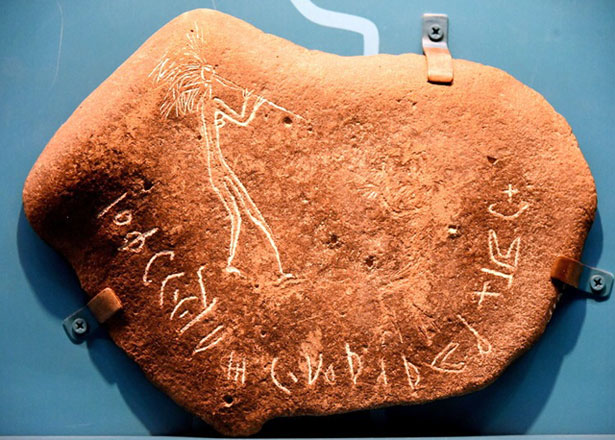AMMAN — Ancient inscriptions found in the Eastern Desert reveal relations between Nabateans and bedouin tribes and depict daily life as well as major political events, wars and revolts, said a Jordanian scholar.
The 16 Safaitic (old Arabic used in southern Syria and northern Arabia) and Nabataean inscriptions were discovered in 2017, said Professor Younis Shdaifat from Mutah University in a recent interview with The Jordan Times, adding that there are many references to the Nabataeans in the inscriptions, dating between the 1st century BC and the 4th century AD.
“In light of the available evidence, it seems that Safaitic and Thamudic tribes lived alongside the Nabataeans and interacted with them politically, socially and economically,” Shdaifat elaborated, noting that a considerable number of these tribes constituted a component of the diverse population that was ruled by the Nabataean kings.
The royal family ruled from Petra while civil and military officials had been appointed to control other territories of the realm, according to the scholar.
“A form of federation existed between the capital in Petra and chiefs of these tribes,” Shdaifat said, adding that the Nabataeans might have made treaties with the bedouin tribes to consolidate sovereignty over the fringes of Nabataea or even parts of the urban centres.
According to David Graf, an American expert in Nabataean history, these tribes must have “had intimate connections with the Nabataean realm” with some of them even being involved in the Nabataean military and political actions, the professor explained.
“One of these inscriptions is dated to the year ‘in which the Nabataeans passed by’ while another inscription refers to a man who was ‘on the look-out for Nabataeans’,” Shdaifat noted.
Further significant events like the year when Nabataeans revolted against the Roman Empire are mentioned in the inscriptions, he continued, noting that other inscriptions refer to important Nabataean historical events such as the arrival of Syllaius from Rome and the year in which Obodas died.
The reference to the Nabataeans in these inscriptions shows the close social and political relations between the Nabataeans, the city-dwellers and the nomads of eastern Jordan, the scholar said.
One group of the texts in the inscriptions that were found is Nabataean and it includes three graffiti, two of which were written according to the Safaitic style of writing texts, while the third one is typically Aramaic, he emphasised.
The inscriptions are important, giving evidence about the Nabataeans but also about the bedouins, who were very much aware of regional and international actors in that period of Middle Eastern history, Shdaifat said.
